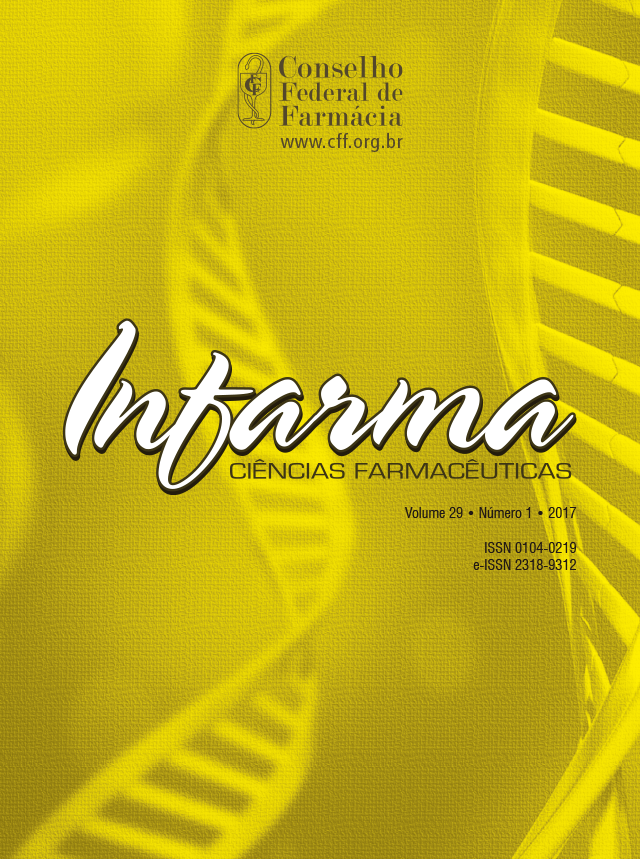PHYTOCHEMICAL STUDY OF HYDRANGEA SP. USING CLASSIC METHODS OF ANALYSIS BY VISIBLE ULTRAVIOLET SPECTROSCOPY (UV-VIS) AND COLUMN AND PAPER CHROMATOGRAPHY
DOI:
https://doi.org/10.14450/2318-9312.v29.e1.a2017.pp68-70Keywords:
carotenoids, chlorophyll, HydrangeaAbstract
The phytochemical research is an issue that can be approach by several areas of science. The Hydrangea sp., also known in Brazil, as “hortênsia” is an ornamental plant widely known because the presence of flavonoids, a class of
antioxidant compounds, which can interact with aluminum ions in the soil, changing the color of the sepals of the Hydrangea flowers. In this work, the objective was to extract chlorophyll from leaves of Hydrangea sp. using three
different solvents (dichloromethane, acetone and aqueous solution of acetone, 80 %). The obtained results indicated that in addition to chlorophyll, there were strong spectroscopic evidence of the presence of the carotenoids β-carotene
and/or lutein, and lycopene. The used method can be applied to explain that: i) the leaves are green by the presence of the pigment chlorophyll; however, ii) they not only contain chlorophyll in their constitution, also have yellow and
reddish pigments and; iii) the aging leaves lose their green color, by the breakage of the resonance of the porphyrin ring from chlorophyll and hence the other colors in the plant predominates.
Downloads
Published
How to Cite
Issue
Section
License
Authors who publish in this journal agree to the following terms:
- Authors retain the copyright and grant the journal the right of first publication, with the work simultaneously licensed under the Licença Creative Commons Attribution which allows the sharing of work with acknowledgment of authorship and initial publication in this journal.
- Authors are authorized to take additional contracts separately, for non-exclusive distribution of the version of the work published in this journal (e.g. publish in institutional repository or as a book chapter), with acknowledgment of authorship and initial publication in this journal.
- Authors are allowed and encouraged to publish and distribute their work online (e.g. in institutional repositories or on their personal page) at any point before or during the editorial process, as this can generate productive changes as well as increase the impact and Citation of published work (See O Efeito do Acesso Livre ).


